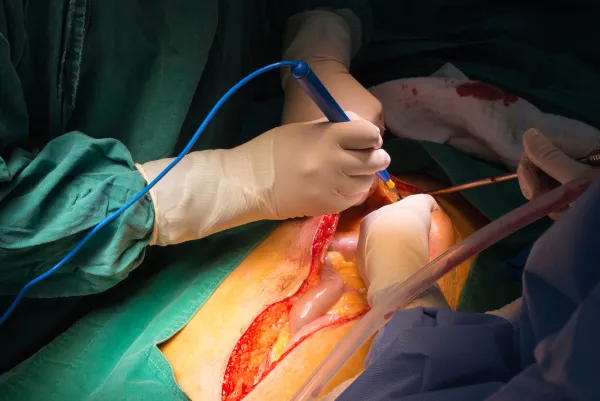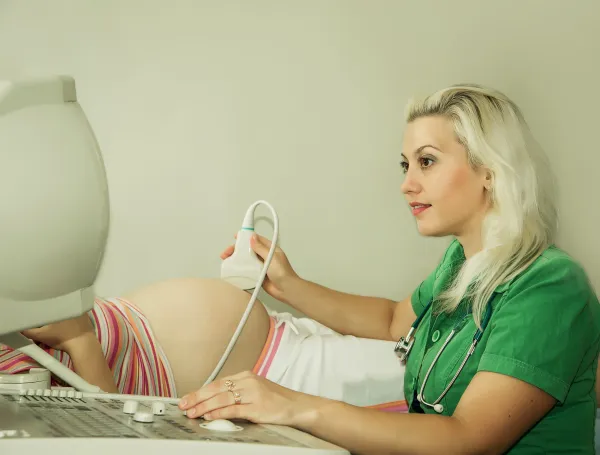Ob-Gyn Coding Alert
Can You Code This Laparoscopic Enterocele Repair, Uterine Suspension Op Note? Find Out
Here’s why you shouldn’t report the enterocele repair. Sometimes you have a difficult op note land on your desk, and it’s up to you to submit the best claim possible. Try your hand at this laparoscopic enterocele repair and uterine suspension note, to keep your skills sharp. First, Read This Note POSTOPERATIVE DIAGNOSIS: Pelvic organ prolapse. OPERATIVE PROCEDURE: Laparoscopic enterocele repair and uterine suspension with mesh, posterior repair INDICATIONS FOR PROCEDURE: The patient was referred for surgical treatment of pelvic organ prolapse. We discussed options and she elected to have a uterus-conserving procedure in order to avoid the morbidity of hysterectomy. She understands that there is a small chance she could develop a condition in the future requiring hysterectomy. DESCRIPTION OF PROCEDURE IN DETAIL: The patient was taken to the operating room where a general anesthetic was administered. She was prepped and draped in sterile fashion. An insufflation needle was inserted through the umbilicus and an opening pressure of 4 was obtained. The abdomen was insufflated and an Optiview trocar was inserted under camera guidance. 1 umbilical port and 2 lateral ports on each side were placed under visual guidance. A vaginal manipulator was placed against the anterior wall to define the patient’s large cystocele. The peritoneum and bladder were dissected away so that the anterior vaginal fascia could be plicated with several interrupted sutures, thereby restoring the integrity and natural length of the anterior vaginal wall. The peritoneum was opened on the right pelvic sidewall between the epigastric arteries and the obliterated umbilical ligament and the pectineal ligament was exposed. The same was carried out on the opposite side. A polypropylene mesh was then attached to the cervix with Ethibond and to the pectineal ligament on either side with Ethibond, thereby resuspending uterus. The mesh was then attached to the anterior vaginal wall with Gortex suture. A vaginal exam was performed to confirm adequate support. The peritoneum was then closed over the mesh with 3-0 PDS. Insufflation was released and the port sites were closed. A cystoscopy was performed. There was no injury to the bladder and strong jets of dye were observed from both ureters. A triangular section of redundant vaginal mucosa overlying a defect in the posterior wall and perineum was undermined and excised. The underlying tissues were plicated with interrupted Vicryl sutures and the defect was closed with a running stitch. A rectal exam was performed to exclude injury. Break This Down You should break the procedure into two steps: 1) laparoscopically, he did the uterine suspension (not a sacrocolpopexy) and 2) cystocele repair. We know there are no codes for this approach, so you will have to use the unlisted laparoscopic code 58578 (Unlisted laparoscopy procedure, uterus) and compare the work to both 58400 (Uterine suspension, with or without shortening of round ligaments, with or without shortening of sacrouterine ligaments; (separate procedure)) and 57240 (Anterior colporrhaphy, repair of cystocele with or without repair of urethrocele, including cystourethroscopy, when performed), says Melanie Witt, RN, MA, an independent coding expert based in Guadalupita, New Mexico. You should include the cystoscopy as part of checking the ob-gyn’s work for the cystocele portion. Then, he removed the scope and performed a posterior repair. You would report that with 57250 (Posterior colporrhaphy, repair of rectocele with or without perineorrhaphy). Important: You should not report the enterocele repair, because the uterine suspension would automatically correct it with the uterine suspension. Plus, the ob-gyn did not document any additional work in repairing it.

Related Articles
Ob-Gyn Coding Alert
- Op Note:
Can You Code This Laparoscopic Enterocele Repair, Uterine Suspension Op Note? Find Out
Here’s why you shouldn’t report the enterocele repair. Sometimes you have a difficult op note [...] - E/M 2023:
Dive Into These New Office/Outpatient Consultation CPT® Guidelines
Hint: Code 99241 will be deleted in 2023. In 2023, you will see several updates [...] - Obstetrics:
Not Using a Global Ob Code? Count Your Antepartum Visits
Tip: Be sure to ask carriers how they want multiple antepartum visits coded. Did your [...] - You Be the Coder:
How to Solve This Cervical Laceration Repair Issue
Question: A patient had a vaginal delivery. One hour later she was having a PP hemorrhage. [...] - Reader Questions:
Draw the Line Between Hysterosalpingogram/Hysterosonogram
Question: What is the difference between a hysterosalpingogram and a hysterosonogram? Which is called an HSG? [...] - Reader Questions:
Do You Know How to Report Postpartum Care Only?
Question: Our ob-gyn provided antepartum care for a patient who delivered while out of town. Now [...] - Reader Questions:
Myomectomy During C-Section Means Reporting This
Question: My ob-gyn performed a myomectomy at the same time as a C-section. Should I report [...] - Reader Questions:
Resolve This Retained Products of Conception Scenario
Question: We billed a 59820 – DX O02.1. The patient was still bleeding, so we brought [...] - Reader Questions:
Identify ‘Global Days’ Like This
Question: Many times we need to know the global days of a procedure to help us [...] - Reader Questions:
Have a “Converted” Case? Do This
Question: My provider started out performing a LAVH. The procedure converted to a TAH due to: [...] - Reader Questions:
Find Your 2021 MIPS Score
Question: When are the 2021 MIPS final scores available to view? Texas Subscriber Answer: If you’ve been [...] - Reader Questions:
Here’s How to Master Shared Service Billing Rules
Question: The physician and the nurse practitioner (NP) both saw a patient during a follow-up visit. [...]




